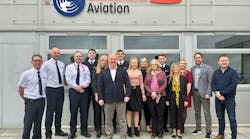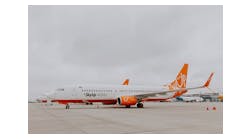We recently reported on www.AviationPros.com that a Southwest Airlines ramp worker died when the baggage tractor he was driving hit a passenger shuttle at Dulles International Airport. Then, just a week later, we posted news that a ramp worker at Washington State's Paine Field Airport got trapped under the wheels of a Boeing 787 as it was towed.
When we think of ramp accidents, we tend to imagine the worst.
However, at the same time we reported these two unfortunate accidents, we were also interviewing D. Bradley Keith, Aircraft Service International Group's director of health, safety, environmental and training, on two safety programs – a corporate program called ZIPP for "Zero Injury Philosophy + Process," as well as one of ASIG's contributions to it – SAFE for "Safety Audit Feedback Engine," which combines observations on the ramp, extensive checklists to note proper ground support procedures and on-the-spot coaching to ensure safety for all.
Keith highlighted an interesting fact: three-quarters of ramp accidents at ASIG sites are so-called "soft tissue" injuries. These are the assorted sprains and strains to muscles due to strenuous activity. While certainly painful, these injuries are far from life-threatening events.
To stop such common injuries, Keith described a couple of ergonomic programs ASIG purchased from outside vendors to address how to best move on the ramp. Think, "turn, don't twist," "lift with your legs not your back" and you'll get a quick picture.
The first program ASIG tried served its purpose well, but emphasized classroom training and theory more than learning by doing.
Currently, ASIG is trying out a "learning by doing" program at its Atlanta and Heathrow sites, working with a company based in the United Kingdom called "Pristine Conditions." Company founder Davy Snowdon, a former Olympic-style weightlifter, recognized that the anatomical skills and expertise he harnessed in his sport could be used to improve manual handling techniques.
"If ever there was an industry that is most susceptible to manual handling injuries," Snowden says on his site, "aviation is very close to the top of the list." In one case study, the company worked with a UK airline that saw its manual handling injuries drop by 69 percent in a 12-month period.
The company assesses the tasks ground crews perform daily and produces customized videos that employees can watch and learn from rather than read a stack of books and sit in a classroom.
Keith believes this approach will not only be more entertaining, but the ramp worker will retain more. We'll check back with Keith and find out how the program's working. In the meantime, you can see some of these "bespoke" videos on Pristine Condition's home page.



